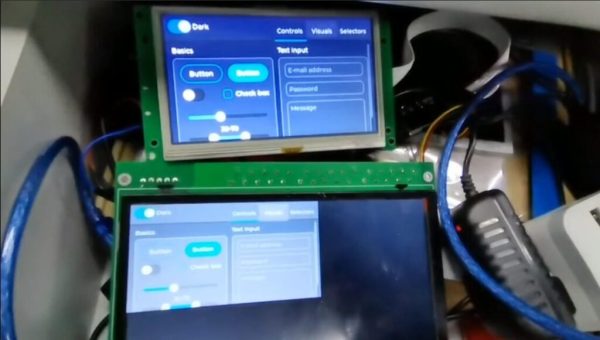当今快速发展的技术环境中,显示技术在设备控制系统中的选择至关重要。在多种选项中,串口屏因其卓越的图像质量和灵活性而成为热门选择。本文将探讨串口屏在设备控制中的适用性,分析其优势、应用场景及未来发展前景.

什么是串口屏?
定义与功能
串口屏是一种基于薄膜晶体管技术的液晶显示屏(LCD)。每个像素由一个晶体管控制,相比传统LCD,可实现更快的响应速度和更准确的色彩还原。因此,串口屏已被广泛应用于智能手机、电视机及工业设备等领域。
关键特性
串口屏的主要特点包括:
- 高分辨率:串口屏可实现高像素密度,确保图像清晰锐利。
- 宽视角:该技术可从不同角度提供更好的可视性。
- 快速响应时间:串口屏可显示动态图像而不会出现明显模糊。
这些特性使 串口屏适用于需要精确视觉反馈的环境。
串口屏在设备控制中的优势
增强视觉清晰度
串口屏的主要优势之一是其卓越的视觉清晰度。在设备控制场景中,操作人员高度依赖视觉信息进行快速决策。TFT技术确保关键数据以高对比度和鲜艳色彩显示,从而提升可读性并降低错误发生概率。
耐用性与可靠性
串口屏以耐用性著称。它们能够承受恶劣环境条件,如温度波动和潮湿环境。这种坚固性使其适用于工业环境,其中设备常暴露于严苛条件下。
设计灵活性
工业串口屏的另一大优势是设计灵活性。它们可制造成各种尺寸和分辨率,支持定制化解决方案以满足特定设备控制需求。这种灵活性确保制造商能为应用场景打造专属用户界面。
串口屏在设备控制中的应用
工业自动化
在工业自动化领域,串口屏广泛用于监控和控制机械设备。它们为操作人员提供实时数据和视觉反馈,提升运营效率。例如,串口屏可集成到控制面板中,显示系统状态、报警信息和性能指标。
医疗设备
由于能够清晰呈现关键信息,串口屏在医疗设备中的应用日益广泛。在超声波机器和患者监护系统等设备中,串口屏使医疗专业人员能够精准查看图像和数据,从而提高诊断准确性。
消费电子
在消费电子领域,串口屏广泛应用于智能家居系统和家电等设备。这些显示屏提供用户友好的界面,使消费者能够更轻松地与技术互动并有效控制环境。
挑战与考量
成本影响
尽管具有诸多优势,串口屏的成本可能高于其他显示技术。制造和将这些显示屏集成到设备控制系统中的成本可能构成挑战,尤其是在预算敏感的项目中。因此,在考虑串口屏时,进行全面的成本效益分析至关重要。
功耗
能耗是另一个需要考虑的因素。尽管串口屏具有诸多优势,但与更简单的显示技术相比,其能耗可能更高。这一方面需要特别评估,尤其是在电池供电设备中,以确保能源效率得到维持。
显示技术未来发展趋势
显示技术的发展
TFT显示技术的未来充满前景,技术创新持续推进。有机发光二极管(OLED)和微发光二极管(microLED)等新技术有望与TFT技术互补,提升其性能。这些创新可能带来更优的图像质量和能效,使TFT显示技术更适用于多样化应用场景。
与物联网(IoT)的集成
随着物联网(IoT)的持续发展,串口屏与物联网设备的集成将日益增加。这种集成将实现更智能的控制系统,显示屏可实时接收连接设备的数据,从而提升用户交互和控制能力。